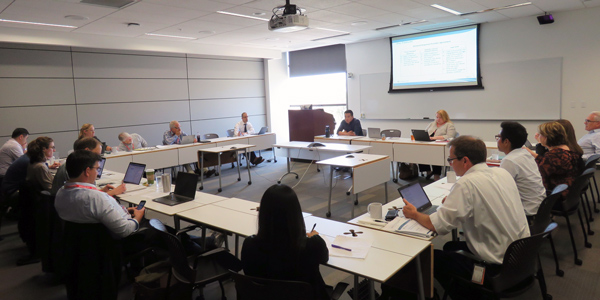By Jason Fordney
FOLSOM, Calif. — Energy storage and distributed energy resources stand to play a bigger role in markets as CAISO moves forward with its latest proposal to integrate and compensate the emerging technologies, ISO staff said last week.
The scope of the Energy Storage and Distributed Energy Resources Phase 3 (ESDER 3) initiative is still taking shape, CAISO Infrastructure and Regulatory Policy Specialist Eric Kim said as he led a March 29 working group in analyzing the design elements.
“Nothing is set in stone,” said Kim, adding that interested parties should file comments with the ISO by April 9.
“What are some things we are not considering?” he asked.
The all-day session provided a view into the extremely technical process of integrating resources that behave in different ways, with new engineering, regulatory and market rule challenges.
CAISO is still gathering stakeholder input on its ESDER 3 straw proposal, issued in February. The ISO said the purpose of the proposal “is to present the scope and solutions of issues related to the integration, modeling and participation of energy storage and DERs in the CAISO market.” The rules will apply across the Western Energy Imbalance Market (EIM) but will not include EIM-specific items. At a session last fall, stakeholders pushed the ISO to expand the scope of the effort. (See CAISO Urged to Broaden ESDER Phase 3.)
The ISO has organized the proposal under the broad themes of demand response, multiple-use applications (MUAs) that allow storage to provide services and receive revenue from more than one entity at a time, and non-generator resources (NGRs). MUAs are getting more attention, with the California Public Utilities Commission in January passing a suite of 11 rules governing their use for storage.
The initiative includes exploration of new bidding and real-time dispatch options for DR and removal of a requirement that DR be aggregated under a single load-serving entity. It will also explore a process for facilitating market participation for NGRs, including identifying commitment costs. Also under development is a load-shift product for behind-the-meter storage, and a methodology to measure load curtailment from electric vehicle supply equipment, which is seen as a way to absorb excess output from renewables. (See CAISO Load-Shifting Product to Target Energy Storage.)
Currently, a DR resource that includes EV supply equipment is measured without considering the equipment’s effect on load dynamics. One of many complex tasks confronting the ISO is determining how to meter the data to measure the performance of EV infrastructure, according to a CAISO presentation.
The initiative’s previous phase, ESDER 2, is being prepared for submission to FERC after being approved by the CAISO Board of Governors last July. (See New CAISO Rules Spell Increased DER Role.) ESDER 2 included a set of alternative energy usage baselines to assess the performance of proxy demand resources, which are DER aggregations of retail customers. It also set out new rules that distinguish between charging energy and station power for storage resources, and established a net benefits test for DR resources that participate in the EIM.
Kim said the ISO will host more ESDER 3 working groups. Thursday’s participants included EV charging station company eMotorWerks, California Energy Storage Alliance, DER and DR companies, utilities and others.





